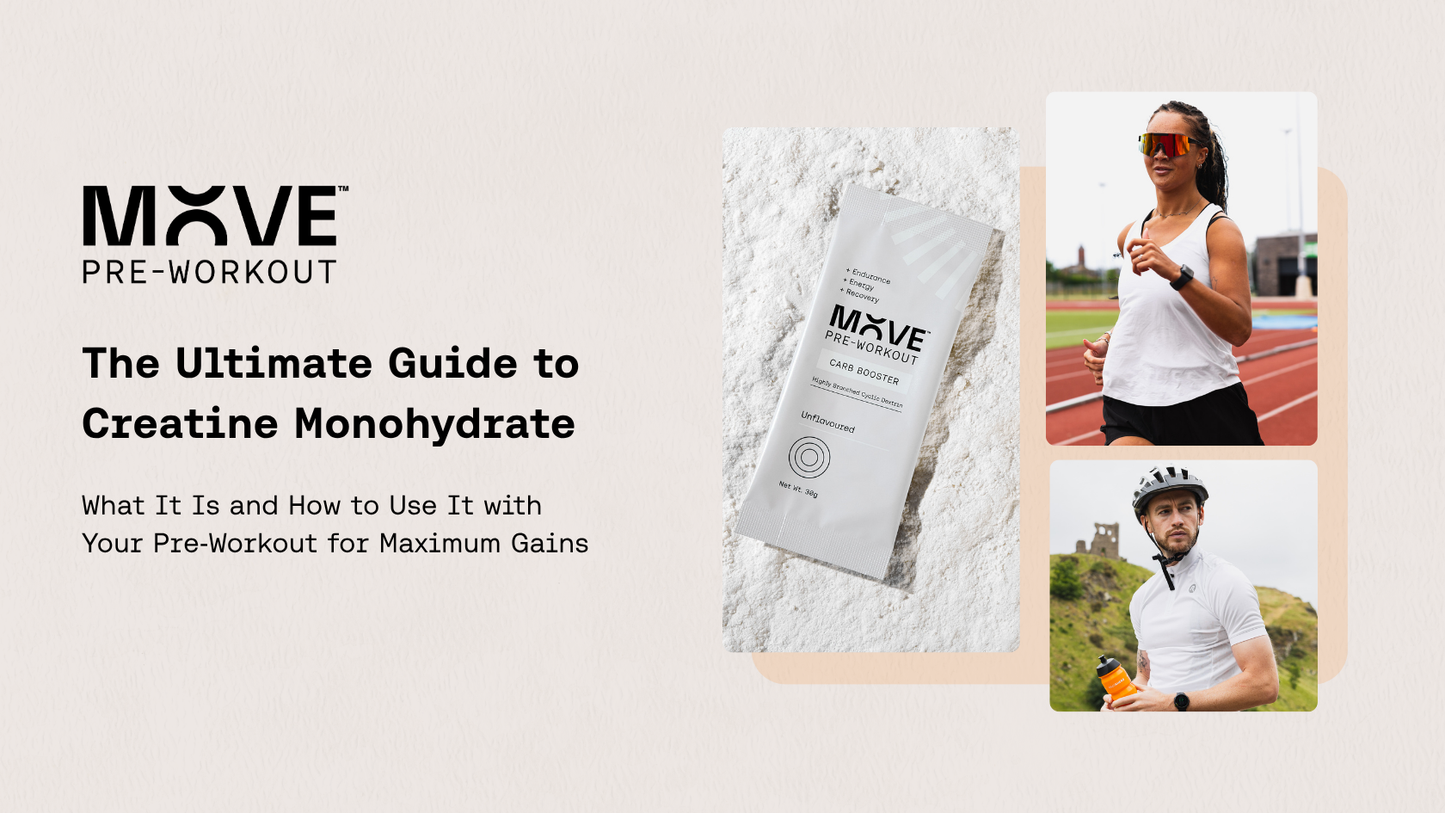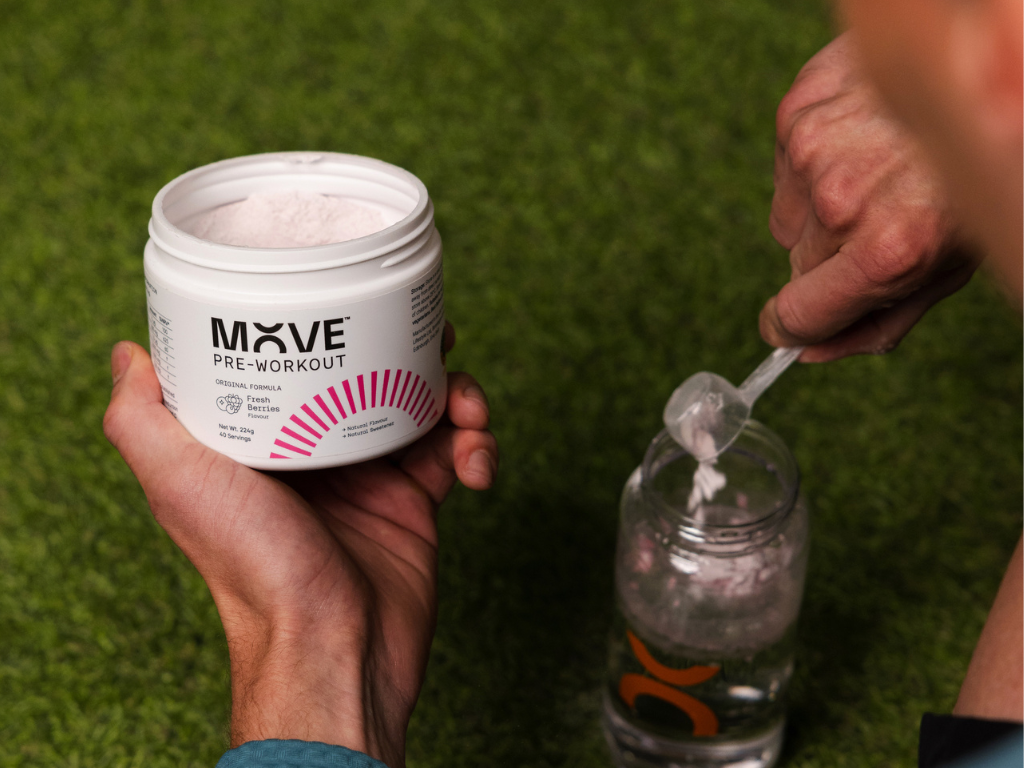
Did you know that 76% of UK adults say they “aspire to be healthy,” but only 1 in 10 actually meet the government's activity guidelines?
That includes just 150 minutes of moderate physical activity and two sessions of strength training or efficient workouts per week. This was according to The UK Fitness Report 2024/25 published in the Health Club Management UK website.
But the gap between intention and action isn’t always about laziness or lack of motivation.
More often, it's about fatigue, slow progress, unclear fuelling, or training that just doesn’t deliver results.
And that’s exactly where a well-used creatine supplement can make a real difference, especially when paired with consistent training.
How Creatine Fits Into UK's Health Aspirations
If you’re one of the many UK gym‑goers trying to stick to a regular routine but struggling with recovery, progress or consistency, creatine might be the most effective (and affordable) supplement you’re overlooking.
-
Creatine improves training quality. It increases strength, power output and total volume in a session. That means you can get greater gains in the same amount of time.
-
Creatine Helps reduce fatigue. It helps replenish ATP stores so you can push harder, for longer.
- Creatine supports strength training. It significantly enhances resistance training performance, making it easier to tick the strength-training box in NHS guidelines.
In short, creatine won’t replace hard work. But it makes that hard work count for more.
What Is Creatine and Why Do We Need It?
Let’s step back a bit and look at the science behind the product.
Creatine is a naturally occurring compound found in your muscles. Its main role is to produce Adenosine triphosphate (ATP). ATP is the body’s main source of energy for short, explosive movements like lifting, sprinting, or pushing hard during intervals.
You get small amounts of ATP from red meat and fish, but supplementing with creatine allows your muscles to become fully saturated, improving energy production, especially during repeated high-intensity efforts.
Creatine is not a steroid, not just for bodybuilders, and has decades of research supporting its safety and effectiveness across all fitness levels.
Benefits of Creatine Supplementation
Here’s what research shows creatine can do:
- Enhance strength and power output
- Improve sprint performance
- Boost HIIT capacity
- Increase training volume and work capacity
- Support faster recovery between sets or sessions
- Promote muscle growth when combined with resistance training
- Aid brain function and cognitive fatigue (emerging evidence)
According to a 2021 research published in Nutrients, creatine monohydrate remains one of the most well-researched and effective supplements available for both athletic performance and health support.
Best Type of Creatine: Why Creatine Monohydrate Is King
There are many types of creatine on the market, but the most tested and trusted form, and often called the best creatine is monohydrate. It’s:
- Backed by over 1,000 peer-reviewed studies
- Widely available and affordable
- Safe and effective across genders and age groups
- Easy to stack with your MOVE Pre-Workout
Newer forms like creatine HCl or ethyl ester have not shown consistent advantages in research and are often more expensive.
See also: Does Pre-Workout Improve Performance?
Should You Take Creatine Before or After a Workout?
When it comes to timing, creatine is flexible. Research in Frontiers in Sports and Active Living (Dinan et al., 2022) shows that taking creatine either before or after your workout leads to similar improvements in strength and muscle growth.
In the study, participants followed a structured resistance training program while supplementing daily with around 5–9 grams of creatine for up to 32 weeks. Both pre-workout and post-workout groups saw comparable gains, and no side effects were reported. The researchers concluded that creatine supports muscle performance regardless of timing, making consistency the real key.
So instead of stressing about the exact minute you take it, focus on taking creatine regularly. Whether you mix it into your pre-workout routine or pair it with a post-training meal, what matters most is that your muscles stay saturated over time.
In short: consistency beats timing. Take it when it fits your routine, and stick with it.
How to Use Creatine With Your Pre-Workout
MOVE’s Creatine Booster was formulated to make this easy. Here’s how to use it:
- Mix 1 scoop (3g) with your MOVE Original or Endurance pre-workout 30 minutes before training
- On rest days, take the same dose with water, juice or a protein shake
- No loading phase is required. A steady 3–5g per day is sufficient for most people
Pro tip: If you're new to creatine, you may want to start with 1.5g per day for the first week to ease digestion, then move up to 3–5g.
Creatine for Women: Yes, It’s Just as Effective
Does Creatine Benefit Women Too? Absolutely.
New research published in Journal of the International Society of Sports Nutrition (Smith-Ryan et al., 2025) shows that creatine offers meaningful benefits for women across every stage of life: from menstruation to menopause.
In this large review, scientists concluded that regular creatine supplementation supports muscle strength, performance, and body composition when paired with resistance training.
But its advantages don’t stop at the gym. The authors highlighted that creatine may also improve mood, support cognitive function, and reduce fatigue, making it an emerging tool for women’s long-term health and well-being.
Creatine appears safe and effective, even when used continuously for up to 32 weeks at typical daily doses of 3–5 grams. While hormonal fluctuations may slightly influence how women metabolise creatine, the overall evidence suggests that the benefits far outweigh any risks.
In short: creatine isn’t just for men or muscle size. It’s a science-backed performance and wellness supplement that supports women’s strength, energy, and cognitive health through every phase of life.
FAQs on Creatine Supplements
-
Does Creatine Cause Weight Gain?
Creatine causes your muscles to store more water, which leads to a small increase in scale weight. This is actually a sign it’s working. So while creatine can cause a change in your weight, it doesn't always lead to weight gain. Any weight gain that does occur is not related to fat mass.
-
Is Creatine Bad for Your Kidneys?
No. Dozens of long-term studies in healthy adults show that creatine does not harm kidney or liver function when taken at recommended doses. If you have a pre-existing kidney condition, consult your GP before starting supplementation.
-
Can You Take Creatine Without Working Out?
You can, but you’ll see the most benefit when combining it with training, especially resistance-based sessions. Creatine enhances performance, but it doesn’t replace the need for effort.
Summary: Should You Take Creatine?
If you’re serious about improving training outcomes, whether it’s lifting heavier, running further, or recovering faster, then creatine is one of the best-researched tools in your kit.
It’s safe, affordable, effective, and easy to integrate into your current pre-workout or daily nutrition strategy.
Ready to Add Creatine the Right Way?
Whether you're training to meet UK activity guidelines or looking for smarter progress in the gym, MOVE’s Creatine Booster gives you 100% pure, research-backed creatine monohydrate.
Creatine Booster is unflavoured, easy to mix, and designed to stack perfectly with MOVE Pre-Workout.
No tingles, no fluff. Just function. Shop your creatine and add it to your stack today.





